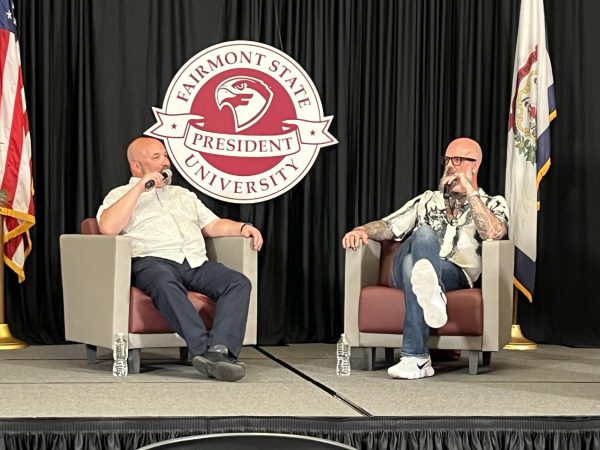Sexual Assault Statistics
Trigger warning: The following article discusses the topics of sexual assault, sexual violence, and sexual harassment. If any of these are triggering to you and could affect your mental health please do you not read. At the bottom of the article there will be resources attached and highlighted if you or anyone you may know need any. Please know that you are not alone and that it is not your fault.
As some of you may know, it is Sexual Assault Awareness Month and before the month wrapped up, I wanted to talk about some of the misconceptions surrounding sexual harassment, assault, abuse, and violence and the statistics among different groups of people. If you have not already read my article on the history of Sexual Assault Awareness Month, I highly suggest you do.
I would like to start off by stating that anyone can be a victim of sexual abuse, assault, and harassment, regardless of age, race, sexual orientation, sex, and gender identity. There is this very damaging misconception that biological male cannot be sexually harassed, assaulted, or abused. That is a myth, they can be sexually harassed, assaulted, or abused by biological men and biological females. It is also a myth that biological women can’t sexually harass, assault, or abuse men or other women, they can.
Another misconception that I would like to clear up is that consent is only for sex. Consent is needed for any type of physical touch, even hair or hands, regardless of the situation. Consent is needed for sending explicit pictures. Consent is needed for comments towards someone as well.
Also, consent can be revoked at my point if one party feels uncomfortable, regardless of who started the situation, how far into the situation, or if there have been similar situations previous previously.
A lack of consent is not consent. Coercion is not consent. If coercion, intimidation, threats, and/or physical force are used, there is no consent. People who are under the influence of drugs and alcohol are not coherent and can not consent.
The last misconception that I would like to clear up is that someone can not be sexually harassed, assaulted, or abused by a partner. That is false, regardless of how long someone is with a partner, they still need to give consent and can be sexually harassed, assaulted, or abused.
Here are some current statistics from the National Sexual Violence Resource Center (NSVRC) and the Center for Disease Control and Prevention (CDC) regarding sexual violence in America.
- Nationwide, 81% of women and 43% of men reported experiencing some form of sexual harassment and/or assault in their lifetime.
Women
- Nearly 1 in 5 women have experienced completed or attempted rape during their lifetime.
- 1 in 4 girls experience sexual abuse in childhood.
- 1 in 3 female rape victims experienced it for the first time between 11-17 years old.
- 1 in 8 female rape victims reported that it occurred before age 10.
- About half (51.1%) of female victims of rape reported being raped by an intimate partner and 40.8% by an acquaintance
Men
- Nearly 1 in 38 men have experienced completed or attempted rape during their lifetime.
- 1 in 13 boys experience sexual abuse in childhood.
- About 1 in 4 male rape victims experienced it for the first time between 11-17 years old.
- About 1 in 4 male rape victims reported that it occurred before age 10.
- Over half (52.4%) of male victims’ report being raped by an acquaintance and 15.1% by a stranger.
Chances are someone in your life is a survivor of sexual harassment, assault, or abuse, even if they have never shared their story with you. If you are a survivor and have not been able to come forward with your story, please know that you are not alone and that there are people who will support you.
Below is a list of local, state, and national resources for anyone who may need them.
Resources:
If you or someone you know has been assaulted or harassed on campus here are some resources through Fairmont State University.
Fairmont State University Campus Police
Pence Hall Room 113
Phone: (304) 367-4157
Emergencies: (304) 367-HELP or (4357)
Title IX
Jessica Kropog Furgason
Title IX and ADA Coordinator and Compliance Specialist
208 A Hardway Building
(304) 367-4689
Student Health Service
3rd Floor, Falcon Center
1201 Locust Avenue
Fairmont, WV 26554
Phone: 304.367.4155
Fax: 304.367.4710
Hours
Monday: 8:00 a.m. – 4:00p.m.
Tuesday: 8:00 a.m. – 4:00 p.m.
Wednesday: 8:00 a.m. – 4:00 p.m.
Thursday: 8:00 a.m. – 4:00 p.m.
Friday: 8:00 a.m. – 4:00 p.m.
After Hours/ Emergency:
Marion County Rescue Squad
911
Fairmont Regional Medical Center
(304) 367-7100
Mental Health Services
Location: 3rd Floor Falcon Center
Phone: 304-333-3661
Email: [email protected]
Hours of Operation: M-F 8:00 AM – 4:00 PM
If you or someone you may know was sexually assaulted off-campus, you can call the non-emergency line to the police department in the city or county where it happened, or walk into a station. If you need immediate medical assistance please go to your local hospital, quick care, or emergency room.
Here are some additional resources.
RAINN
Hope Inc Domestic Violence Center
304-624-9835
National Suicide Prevention Lifeline
800-273-8255
National Sexual Violence Resource Center
https://www.nsvrc.org/saam/day-of-action







